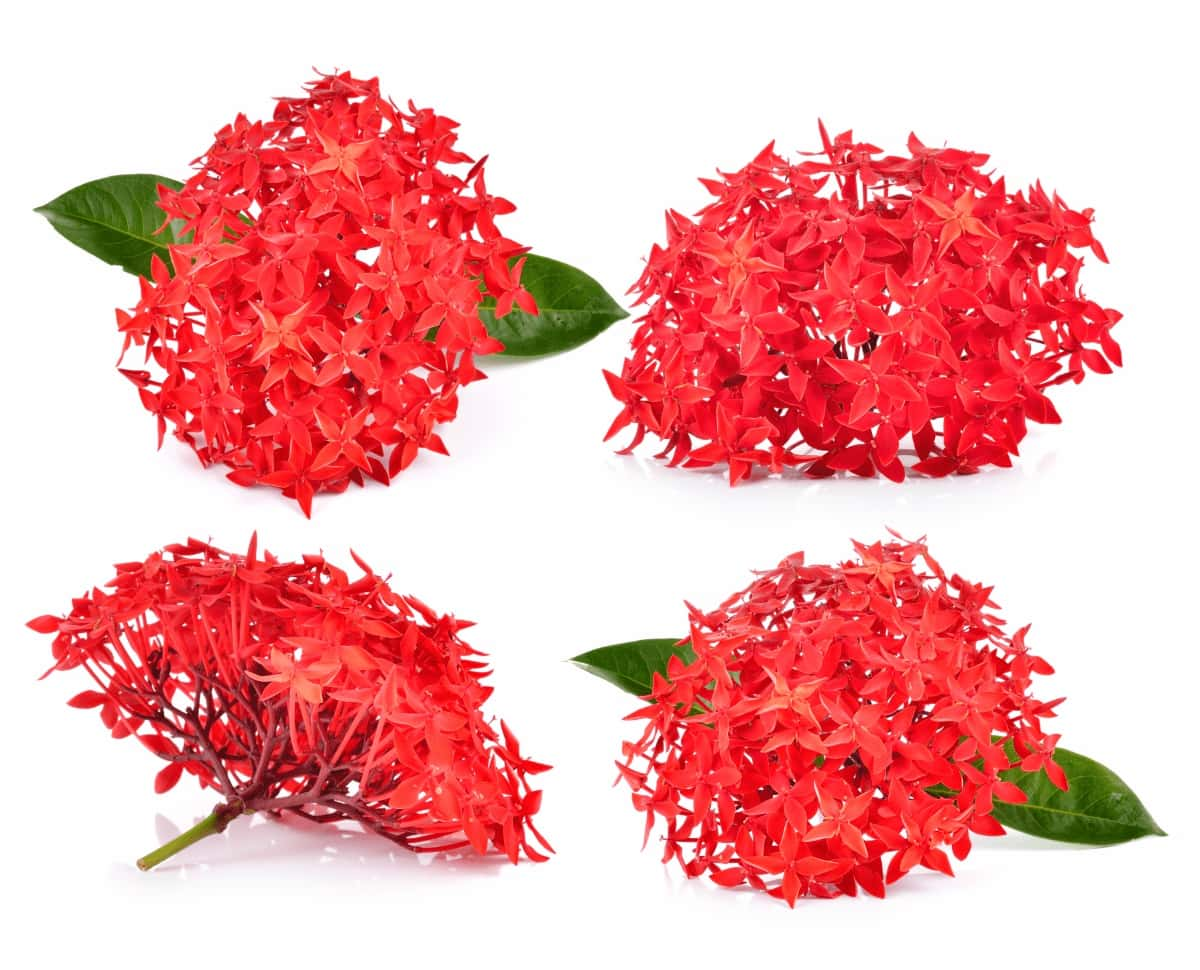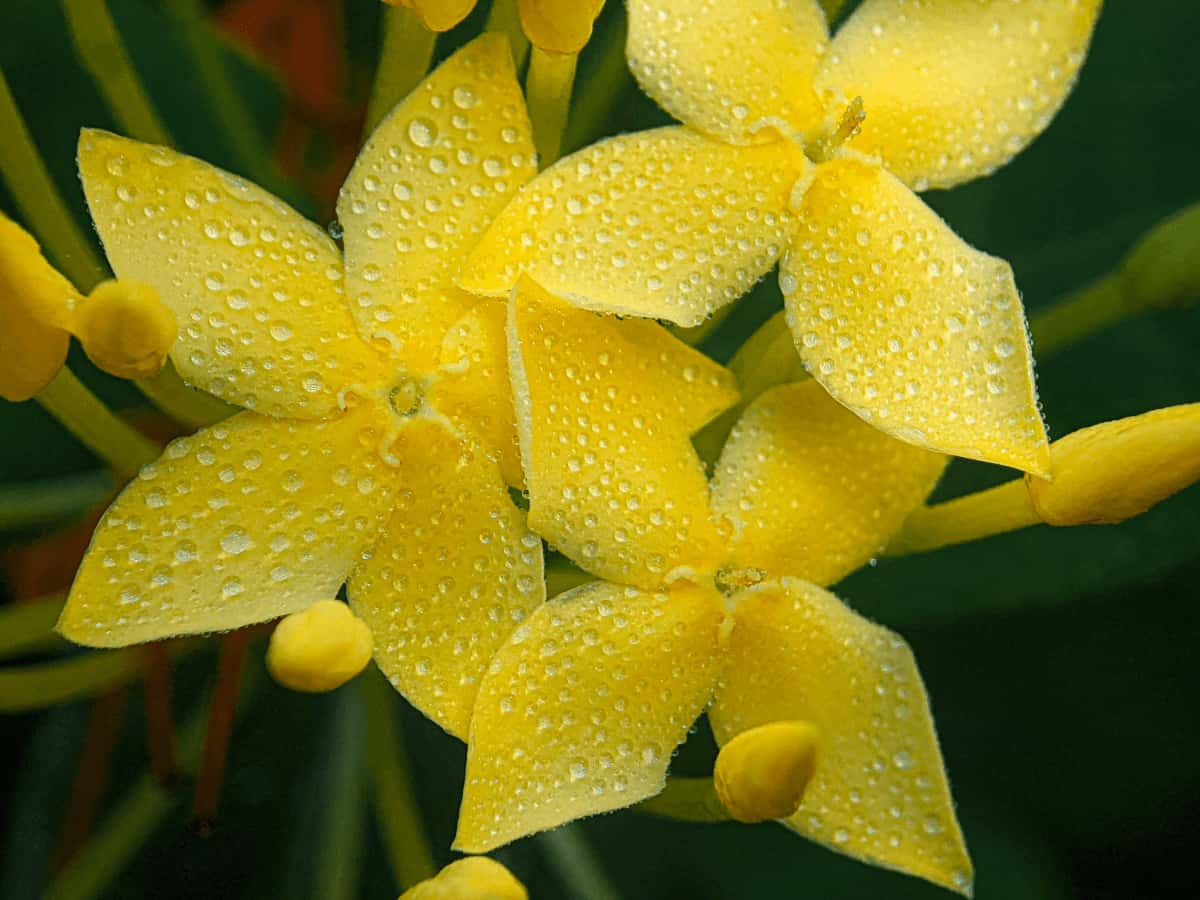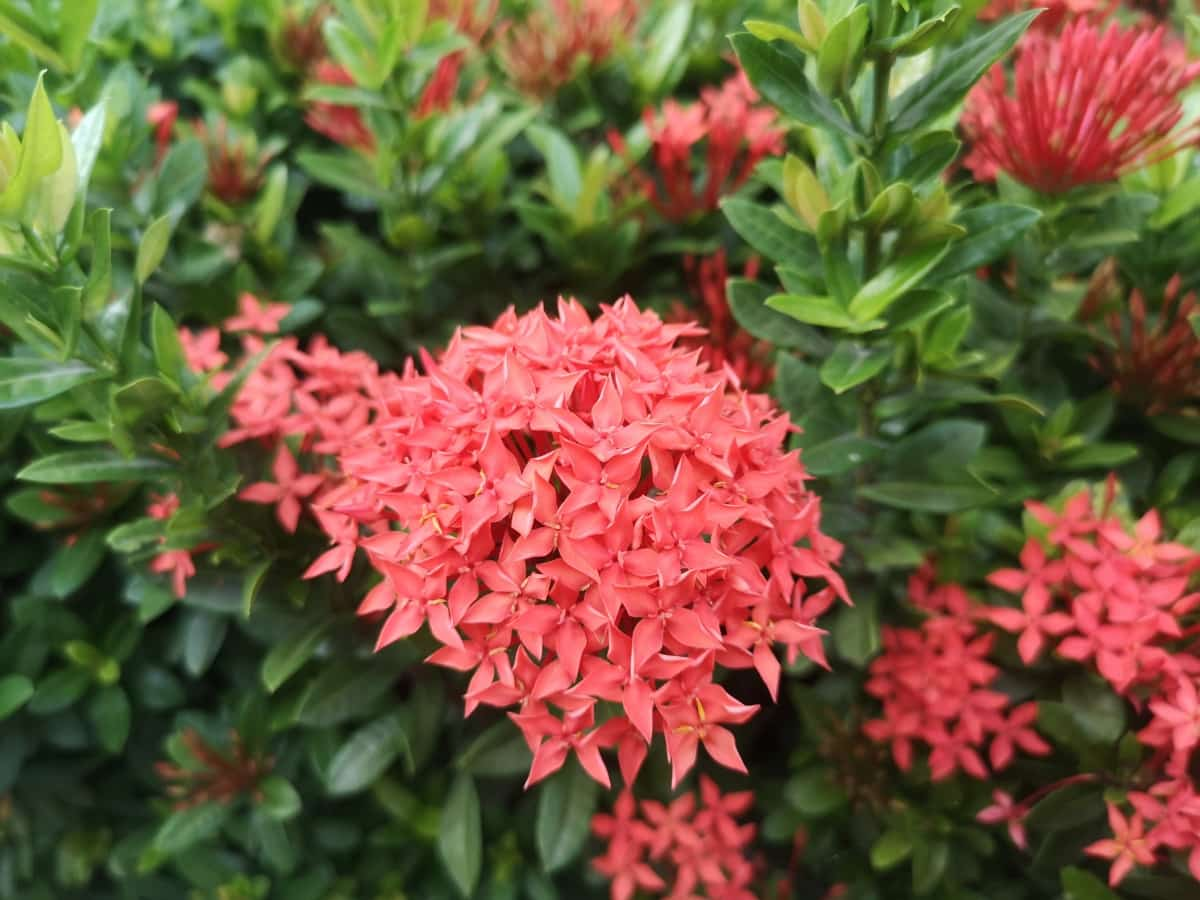The Ixora plant, a vibrant and popular tropical shrub, requires specific care and attention for optimal growth. This article offers an extensive manual for cultivating and maintaining Ixora plants, encompassing propagation and winter care.

How to Grow and Care for Ixora
Understanding the Ixora Plant: A Comprehensive Guide
The Ixora plant is a popular tropical shrub known for its striking clusters of flowers and glossy green leaves. When considering how to grow and care for the Ixora plant, it’s important to understand its basic needs and preferences. Originating from tropical regions, Ixora flourishes in warm conditions and is frequently cultivated as an ornamental species in both outdoor gardens and indoor settings.
Its adaptability allows for pot cultivation, rendering it an ideal selection for both indoor horticulture and outdoor landscaping. Growing and caring for the ixora plant indoors involves providing adequate light, proper watering, and suitable temperature conditions. In colder climates, understanding ixora plant care in winter is crucial, especially when it comes to overwintering strategies.
Propagating Ixora Plants: Methods and Tips
How to grow an Ixora plant from cutting is a common question among garden enthusiasts. Propagation through cuttings is a reliable method for growing Ixora plants. Begin by choosing a robust stem and trimming a 4-6 inch segment just beneath a leaf node. Eliminate the lower leaves and immerse the trimmed end in the rooting hormone to stimulate growth.
Place the cutting into a pot containing well-draining soil and maintain it in a warm, humid location with indirect sunlight. Regular misting helps maintain the necessary humidity. Rooting typically occurs in a few weeks, after which the young plant can be gradually introduced to more sunlight.
Choosing the Right Location for Your Ixora Plant
For optimal growth, it’s essential to choose the right location for your Ixora plant. Ixora prefers bright, indirect sunlight and can tolerate some direct sun, especially in the morning. However, prolonged exposure to harsh afternoon sun can cause leaf burn. When growing Ixora indoors, a spot near a sunny window is ideal.
Take measures to shield the plant from chilly drafts and drastic temperature swings, as they can be harmful to its well-being. In outdoor settings, Ixora plants thrive in a sheltered location that receives ample sunlight but is shielded from strong winds and intense afternoon sun.
Soil Requirements for Growing Ixora Plants
Ixora plants require well-draining soil with a slightly acidic to neutral pH. A mixture of regular potting soil with added peat moss or compost is ideal for ensuring good drainage and adequate nutrient supply. To prevent root rot, it’s important to have proper drainage in the pot and improve soil structure and drainage by adding organic matter when cultivating Ixora in garden beds. Regular testing of the soil pH and adjusting it as necessary helps maintain the ideal conditions for ixora’s growth.
In case you missed it: How to Grow Moss at Home in 10 Steps: Grow from Seeds in Pots Using Buttermilk

Watering and Humidity Needs of Ixora Plants
Watering is crucial in ixora plant care, requiring a balance to avoid both under and over-watering. Maintain soil moisture consistently, avoiding excessive wetness. Let the top inch of soil dry before watering to prevent root rot from over-watering or wilting and leaf loss from under-watering. Ixora plants benefit from elevated indoor humidity; consider regular misting or using a tray with pebbles and water to boost humidity levels around the plant. In dry climates, a humidifier may be necessary to provide the right environment for indoor Ixora plants.
Fertilizing Your Ixora Plant for Optimal Growth
Fertilization is key in promoting healthy growth and vibrant blooms in ixora plants. Use a balanced, slow-release fertilizer during the growing season, typically in spring and summer. Fertilize once a month, following the product’s instructions for dosage. It is crucial to avoid excessive fertilization, as it may result in soil salinity accumulation, which can potentially damage the plant. During winter, reduce or stop fertilizing as the plant’s growth slows down. Ensuring the plant receives the right amount of nutrients will result in lush foliage and abundant flowering.
Pruning and Shaping Ixora Plants
Pruning and shaping are important aspects of ixora plant care, helping to maintain the plant’s size and encourage bushier growth. Trim Ixora shrubs once they’ve completed their flowering cycle to eliminate any deceased or impaired branches and sculpt the plant’s form. Regular trimming of leggy branches promotes a more compact and attractive appearance. Always use clean, sharp pruning tools to make clean cuts and avoid damaging the plant. Light pruning throughout the year helps maintain the desired shape and size of your ixora plant.
In case you missed it: How to Grow Passiflora Caerulea: Guide to Grow Blue Passion Flower

Dealing with Pests and Diseases in Ixora Plants
Ixora plants can face several pests and diseases, commonly including aphids, spider mites, and fungal infections. Regular inspection helps in the early detection and control of these issues. If pests are found, treat the plant with an appropriate insecticide or natural remedies like neem oil or insecticidal soap. For fungal diseases, reduce watering and improve air circulation around the plant. Avoid wetting the foliage, as this can exacerbate fungal problems. Maintaining good cultural practices is key to preventing Ixora problems and keeping the plant healthy.
Overwintering Ixora Plants: Essential Guidelines
Understanding ixora plant care in winter, especially in colder climates, is crucial for its survival. When temperatures drop, move outdoor ixora plants indoors to a warm, sunny spot. Reduce watering during winter, but ensure the soil doesn’t completely dry out. Avoid placing the plant near heating vents or cold drafts, as extreme temperature fluctuations can stress the plant. Overwintering ixora plants may result in less growth and fewer blooms, but proper care during this period ensures the plant will bounce back in spring.
Troubleshooting Common Issues in Growing Ixora Plants
Growing ixora plants can sometimes be challenging, with common issues including yellowing leaves, lack of blooms, and stunted growth. Yellowing leaves may indicate excessive watering, insufficient watering, or a lack of essential nutrients. Adjust watering practices and ensure proper fertilization to address this.
In case you missed it: How to Grow Pepino Melon in Pots and Indoors: Propagation from Seeds and Cuttings

If the ixora plant is not blooming, it might need more light or fertilizer. Stunted growth can be due to poor soil conditions, inadequate light, or pests. Regular monitoring and adjusting care practices accordingly can help solve these common Ixora problems, ensuring a healthy and thriving plant.
Conclusion
Growing ixora plants successfully involves understanding their specific needs and responding to various challenges. By following these guidelines on propagation, location, soil, watering, and dealing with pests and diseases, gardeners can enjoy the lush beauty and vibrant blooms of this tropical plant year-round.
- Feed Your Flock for Less: Top 10 Tips to Save on Chicken Feed
- Ultimate Guide to Ossabaw Island Hog: Breeding, Raising, Diet, and Care
- Hatching Answers: The Top 10 Reasons Your Chickens Aren’t Laying Eggs
- Eggs and Economics: Breaking Down the Cost of Raising Backyard Chickens
- Defend Your Greens: Proven Methods to Keep Iguanas Out of Your Garden
- Ultimate Guide to Cinnamon Queen Chicken: A Comprehensive Guide for Beginners
- Ultimate Guide to California Tan Chicken: Breeding, Raising, Diet, Egg-Production and Care
- Ultimate Guide to Marsh Daisy Chicken: Breeding, Raising, Diet, and Care
- 10 Types of Chicken Farming Businesses You Can Start for Profits